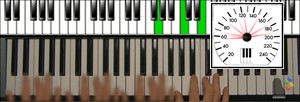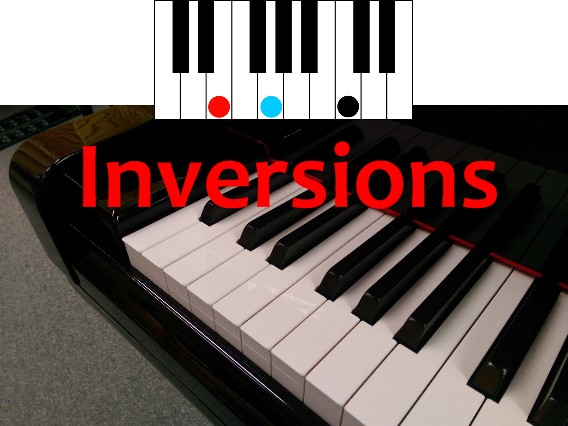Let’s talk about how to learn piano inversions: 5 Ways to become an expert
If you’re just getting into playing the piano with chords you probably have heard of the concept of inversions. This is simply playing the notes of a chord in different positions. When you invert a chord, you still have the same notes but they’re in a different order. This causes the chord to have a slightly different sound. The most noticeable difference is the note on top of the chord. It has the highest pitch of the chord tones which stand out above the others. It’s also what we’re inclined to listen to in western music. This is because the top note is recognized as the melody note in most cases.
Let’s take a quick look at the different inversions of C Major.

C Major-Root Position

C Major-1st Inversion

C Major-2nd Inversion
Now that we’ve covered what inversions are, let’s talk about how to learn piano inversions and how to study them.
1 Slow down: Start slowly and play your inversions with precision as you gradually increase speed. When you find yourself hitting wrong notes: slow down again. What you’re actually doing is cementing these movements in your hands.
yourself hitting wrong notes: slow down again. What you’re actually doing is cementing these movements in your hands.
2 Play & Hold: Holding an inversion for just a few seconds, develops your kinesthetic sense. Which is just another way of saying that it develops your physical memory. It’s not just your brain, but also your hands that’s actually learning the inversion.
3. Use “closest fingering”: The fingering that you use depends on the direction you’re going on the keyboard. It’s more efficient to use fingering that puts your fingers in position for smoother and faster transitions to the inversions.
4. Get Stuck: Choose 2 inversions and start bouncing back and forth. This is especially useful when you run into a problem moving from one particular inversion to another that’s giving you trouble. Sure, it will sound like a broken record but it will iron out that problem so you can move on to the next one. 

5. Stay Close to Home: It’s always to good to study inversions by moving several octaves up and down the keyboard but, try just going from root position up to 2nd inversion and back. You’re familiarity with the inversions will develop a little faster and easier by staying close to the chord inversion you started on and you won’t have to worry about the difficulty of moving through so many registers of the keyboard.
BONUS:
Order up a Combo: Combine two adjacent chords and play inversions of each of them together. This is a little more advanced than just focusing on just one chord but it can be a very powerful way to learn inversions so well that you can play them effortlessly. Hey, it also sounds pretty musical too. So try it!
Learn about a very colorful and visual way to play the piano and sound like a professional at your piano or keyboard by finding out more about Color Score.
Greg Lee
Latest posts by Greg Lee (see all)
- What is a minor/Major 7 Chord? - October 26, 2023
- 7 Chord Substitutions that Professionals Use - October 19, 2023
- 5 Simple Chord Tricks to Sound Amazing - October 5, 2023





